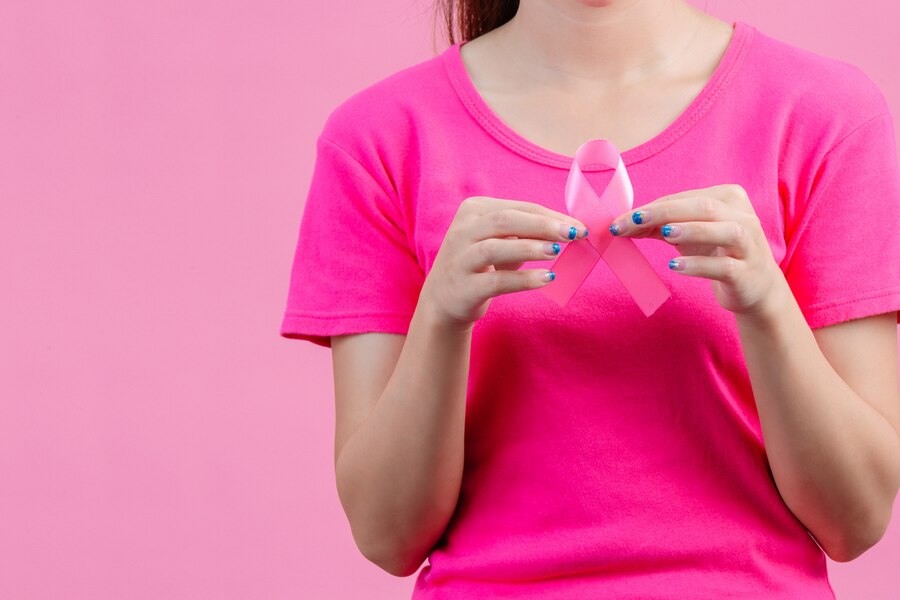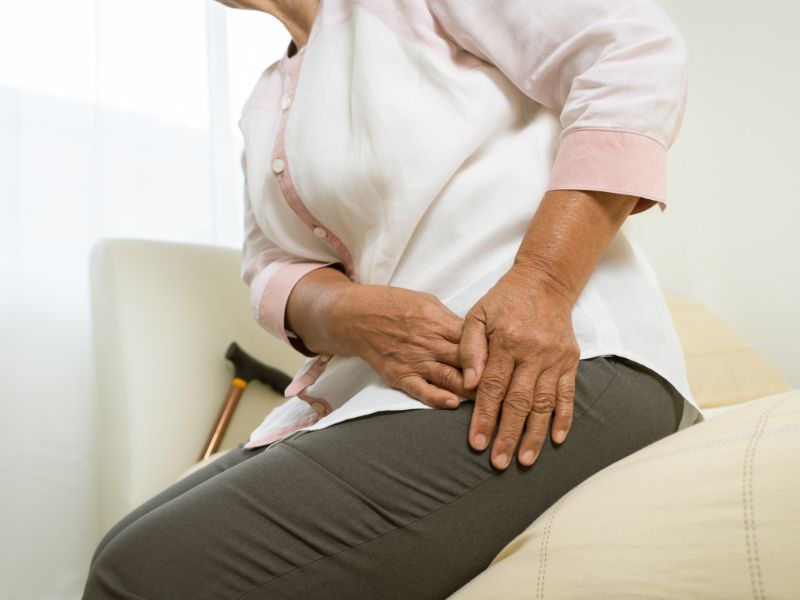
Everything You Need to Know About Breast Cancer
A Guide for Patients and Families
Breast cancer is one of the most common and concerning types of cancer worldwide. This disease affects millions of women each year, and men to a lesser extent. According to recent statistics in Switzerland, breast cancer is the most common cancer among women, with nearly 6,000 new cases per year.
Prevention and early detection are crucial in the fight against this disease and in improving cure rates. Although the exact causes of breast cancer are not fully understood, it is essential to raise public awareness about prevention and early detection, as well as the need to support patients affected by this disease and the healthcare professionals who care for them. By working together to better understand and prevent this type of cancer, we can contribute to improving the health and well-being of our communities.
Definition
Breast cancer is a dangerous condition that occurs when cancer cells multiply uncontrollably in breast tissue. This excessive growth of abnormal cells can destroy surrounding healthy tissues, and if left untreated, can spread to other areas of the body. The causes of breast cancer are complex and multifaceted, and can include genetic, hormonal, environmental, and lifestyle factors. Early detection and appropriate treatment can improve survival and cure rates, which is why it is essential to consult a doctor if you notice any suspicious signs.
Symptoms
It is important to note that the symptoms of breast cancer can vary from person to person, and some people may have no visible symptoms in the early stages of the disease. However, here are some common symptoms of breast cancer :
- Lump or nodule in the breast or armpit.
- Changes in size, shape, or appearance of the breast.
- Rash or skin irritation on the breast.
- Bleeding or fluid discharge from the nipple.
- Itching or burning sensation in the breast.
- Inversion of the nipple.
- Pain in the breast or chest.
It is crucial to realize that the presence of these symptoms does not necessarily mean that you have breast cancer. However, if you notice one or more of these symptoms, it is important to consult a doctor for a complete examination and an accurate diagnosis. Regular screening and prevention are essential measures for early detection of breast cancer and for improving cure rates.
Risk factors
Although the exact causes of breast cancer are not fully understood, certain risk factors are known to be associated with this disease. Here are some of the main risk factors:
- Sex : Women are more likely to be affected by breast cancer than men.
- Age : The risk of breast cancer increases with age.
- Family history : If you have close family members with breast cancer, your risk may be increased.
- Genetic mutations : Certain genetic mutations can be associated with an increased risk of breast cancer.
- Obesity : Being overweight is a risk factor.
- Alcohol consumption : Drinking too much alcohol can increase your risk.
- Late pregnancy or no pregnancy : Women who have children after the age of 30 or who have no children may have an increased risk.
- Diet : A diet high in saturated fats and low in fruits and vegetables can increase your risk.
However, it is important to note that the presence of these risk factors does not necessarily mean that you will develop breast cancer. Nevertheless, by being aware of these factors, you can take steps to reduce your risk and ensure that you follow recommendations for regular screening.
Medical imaging diagnosis
To diagnose breast cancer, healthcare professionals use several medical imaging techniques to create detailed images of the breast and detect any abnormalities. The main imaging techniques used are:
- Mammography : This technique uses low-dose X-rays to create a detailed image of breast tissue. It is the most common screening test for breast cancer.
- Ultrasound : This technique uses sound waves to generate images of the breast. It is often used in conjunction with mammography to obtain additional information.
- MRI (Magnetic Resonance Imaging) : This technique uses a magnetic field and radio waves to create detailed images of breast tissue.
Doctors interpret the images obtained from these techniques to determine if a patient shows signs of breast cancer and to define the most appropriate treatment stages. It is important to remember that these techniques are not painful and their role is essential in the early detection and treatment of breast cancer. Early detection is crucial for increasing the chances of successful treatment and improving survival rates. Therefore, it is important for women to follow recommended screening guidelines and undergo regular breast cancer screening tests as advised by their healthcare providers.
Self-palpation
Self-palpation is a simple and accessible method to monitor your breasts and detect any potential abnormalities. Follow these steps to perform an effective self-palpation :
- Choose the right time: Perform your self-palpation a few days after your period, when your breasts are less sensitive and swollen.
- Standing position: Remove your shirt and bra. Place your hands on your hips and press firmly while leaning slightly forward. Perform circular motions with your hands, starting from your armpits and moving up towards your collarbones.
- Lying position: Lie down on your back and place a pillow under your right shoulder. Place your right arm behind your head. Use the fingers of your left hand to examine your right breast, making circular motions in a spiraling pattern, gently pressing to palpate the different areas. Repeat this step for your left breast.
- Check your nipples: Examine your nipples for discharge, secretion, rash, or inversion.
- Repeat regularly: Perform a monthly self-palpation to become familiar with the texture and feel of your breasts and to more easily detect any changes.
Do not worry if you feel small lumps or changes in texture during your self-palpation. Most changes are benign and are not a sign of breast cancer. However, if you notice persistent changes, consult your doctor for a complete evaluation. Although self-palpation does not replace examinations performed by healthcare professionals, it is an important preventive tool to ensure your health and well-being. Remember that early detection is crucial for the successful treatment of breast cancer, so regular self-examination, along with recommended mammograms and clinical breast exams, is an essential part of maintaining your breast health.
Prevention
Preventing breast cancer is a common goal for everyone who wants to promote health and well-being. Although the disease can occur in anyone, there are preventive measures you can incorporate into your daily life to reduce your risk. Here are some examples :
- Follow a healthy diet : Choose a varied and balanced diet rich in fruits, vegetables, whole grains, and lean proteins.
- Control your weight : Maintain a healthy weight by balancing your calorie intake and engaging in regular physical activity.
- Limit your alcohol consumption : Excessive alcohol consumption can increase your risk of breast cancer.
- Do not smoke : Smoking is a known risk factor for breast cancer.
- Exercise regularly : Physical activity helps maintain overall health and may help reduce your risk of breast cancer.
- Have regular medical check-ups : Women should ensure they undergo regular mammogram examinations, according to their age and family history.
By adopting these lifestyle habits, you can not only reduce your risk of breast cancer but also improve your overall health. Remember that prevention is always more effective than cure, and small daily actions can have a significant impact on your long-term well-being. Additionally, early detection is crucial for successful treatment, so don’t hesitate to consult your doctor if you notice any changes in your breast tissue or have any concerns about your breast health. By being proactive and taking care of your health, you can contribute to a healthier and happier life.
Conclusion
Breast cancer is a disease that affects many people around the world and can have significant consequences on health and well-being. However, thanks to advances in research and treatment, many people who are affected by breast cancer are able to recover and live full and happy lives.
To ensure your health, it is important to be familiar with your breasts, lead a healthy lifestyle, and follow regular screening recommendations. If you have questions or concerns, do not hesitate to consult a healthcare professional for appropriate advice and support.
Together, by engaging in prevention and supporting those affected by breast cancer, we can contribute to improving the quality of life of our community and promoting greater awareness about this disease. The fight against breast cancer is a cause that concerns us all, and every small action can make a significant difference in the lives of those affected.




